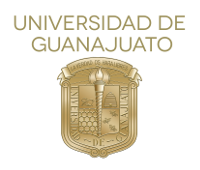Please use this identifier to cite or link to this item:
http://repositorio.ugto.mx/handle/20.500.12059/416Full metadata record
| DC Field | Value | Language |
|---|---|---|
| dc.rights.license | http://creativecommons.org/licenses/by-nc-nd/4.0 | es_MX |
| dc.coverage.spatial | MX | - |
| dc.creator | GUADALUPE CURIEL DEFOSSE | es_MX |
| dc.date | 2013-10 | - |
| dc.date.accessioned | 2018-08-16T20:52:50Z | - |
| dc.date.available | 2018-08-16T20:52:50Z | - |
| dc.date.issued | 2013-10 | - |
| dc.identifier.issn | 2448-4717 | - |
| dc.identifier.uri | http://www.repositorio.ugto.mx/handle/20.500.12059/416 | - |
| dc.description.abstract | El presente artículo, versión textual de la conferencia magistral dictada en el marco de las X Jornadas de Historia de la Universidad de Guanajuato, llevadas a cabo en 2012, revisa el proceso de establecimiento, institucionalización y desarrollo de los repositorios formales que resguardan el patrimonio documental de nuestro país, así como los acervos bibliohemerográficos cuya diversidad cronológica, ideológica y temática es testimonio del devenir histórico de México. En este sentido destacan la Biblioteca Nacional y la Hemeroteca Nacional de México, los acervos más ricos con que cuenta el país y que forman parte del conjunto de bibliotecas y hemerotecas en el territorio nacional, infraestructura que ha contribuido a la socialización de la práctica de la investigación histórica documental y bibliohemerográfica. La vanguardia en esta labor constructiva la detenta el proyecto Biblioteca Nacional Digital de México, que junto con otros repositorios digitales permiten −y permitirán de manera cada vez más eficiente− el acceso remoto a estos recursos. | es_MX |
| dc.language.iso | spa | es_MX |
| dc.relation | http://revistaoficio.ugto.mx/index.php/ROI/article/view/5/5 | - |
| dc.rights | info:eu-repo/semantics/openAccess | es_MX |
| dc.source | Oficio. Revista de Historia e Interdisciplina num.1 vol.1 (2013) | - |
| dc.title | Importancia de la infraestructura documental para la práctica profesional de la Historia | es_MX |
| dc.type | info:eu-repo/semantics/article | es_MX |
| dc.creator.id | info:eu-repo/dai/mx/curp/CUDG521212MGRRFD06 | es_MX |
| dc.subject.cti | info:eu-repo/classification/cti/55 | es_MX |
| dc.subject.keywords | Historia | es_MX |
| dc.type.version | info:eu-repo/semantics/publishedVersion | es_MX |
| dc.audience | Researchers | - |
| dc.publisher.university | Universidad de Guanajuato | es_MX |
| dc.description.abstractEnglish | This article, a textual version of the keynote speech delivered within the framework of the X History Conference of the University of Guanajuato, held in 2012, reviews the process of establishment, institutionalization and development of formal repositories that protect documentary heritage of our country, as well as the bibliohemerographic collections whose chronological, ideological and thematic diversity is testimony of the historical evolution of Mexico. In this sense, the National Library and the National Newspaper Library of Mexico stand out, the richest assets available in the country and that are part of the set of libraries and newspaper archives in the national territory, infrastructure that has contributed to the socialization of the practice of historical documentary and bibliohemerographic research. The avant-garde in this constructive work is held by the Digital National Library of Mexico project, which together with other digital repositories allow - and will allow in an increasingly efficient way - remote access to these resources. | es_MX |
| Appears in Collections: | Revista Oficio de Historia e Interdisciplina | |
Files in This Item:
| File | Description | Size | Format | |
|---|---|---|---|---|
| 5-9-1-SM.pdf | 176.91 kB | Adobe PDF |  View/Open |
Items in DSpace are protected by copyright, with all rights reserved, unless otherwise indicated.

